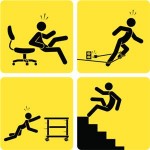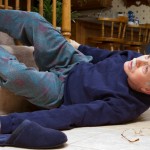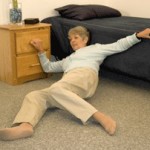14
Jul
2017
Doctor I am Dizzy
Posted On July 14, 2017
By Dr.Adel Serag
And has No Comment
One-third of people say that they have been fainted and felt dizzy at least once. Is this serious!!.
Fainting is Defined as a sudden, temporary loss of consciousness, fainting occurs when something interrupts blood flow to the brain. The medical term is syncope, which comes from a Greek word meaning “contraction” or “cut off.
“Witnessing a faint can be scary because it can look like the person has died, and it is panicky to the witnesses. But if it’s really faint, the person will regain consciousness quickly.


-
Before and after the fall
-
the feeling of a cold, clammy sweat
-
feel lightheaded, confused, or nauseated
-
have blurred vision or see spots
-
hear a ringing in your ears
-
yawn and breathe quickly and deeply.
If you feel these symptoms, lie down if possible; if not, sit with your head between your knees to encourage blood flow to your brain.
“You can try to awaken the person with a gentle shake, or by touching their face or calling their name.
Keep the person lying down for a few minutes and elevate the legs slightly, if possible. If available, a damp, cool cloth on the forehead can be helpful, especially if you’re in a warm room or outside on a hot day.
Vasovagal syncope
refers to faints caused by excessive stimulation of the vagus nerve, the part of the nervous system that regulates blood pressure and heart rate. In response to some trigger, the blood vessels in your legs relax and the heart rate slows, making it difficult for blood to return to the heart. Blood pressure drops, and down you go.
Strong emotion, such as a response to bad news, the sight of blood, or a feeling of panic or claustrophobia is sometimes triggering factor. Also, a bad coughing spell or strain to have a bowel movement, or even if you’ve been standing for a long time.
Vasovagal syncope tends to be more common in people under 35. With age, the nervous system doesn’t react as quickly, so these types of faints occur less frequently. After age 50, other, more dangerous causes become more prevalent, so fainting should be evaluated by a medical professional.
Orthostatic hypotension

Orthostatic hypotension is literally “low blood pressure when standing upright.” It’s also known as postural hypotension. A classic example is a 70-something person who’s been ill (and therefore not eating or drinking normally) and who faints right after getting out of bed in the morning.
Usually is a side effect of beta blockers (which reduce the heart rate) and alpha blockers (which can reduce blood pressure; they’re used in men to treat an enlarged prostate). Older folks are more prone to dehydration, as the sense of thirst diminishes over the years. Also, diseases such as diabetes, cancer, and Parkinson’s (all of which are more common with age) may cause orthostatic hypotension.
Abnormal heart rate :(Tachycardia or Bradycardia)
If your heart rate is very fast, your blood pressure may fall, and fainting may follow. A number of different heart conditions — from problems with the heart’s electrical system to defective valves — can trigger palpitations, a feeling that your heart is fluttering, racing, or missing a beat. Conversely, a very slow heart rate (known as bradycardia) can also cause you to faint. This condition is usually caused by electrical abnormalities in the heart or heart damage from a heart attack or other disease. Thyroid problems and certain medications can also lead to an abnormally slow or fast heart rate.
Finding the underlying cause

If a young, healthy person faints after an obvious vasovagal trigger, there’s not always a need to see a doctor. But if you faint for the first time after age 40, see a doctor explore all the potential causes. He or she should check your blood pressure (both sitting and standing, if orthostatic hypotension is suspected) and do an electrocardiogram (ECG), a test that checks for electrical problems with the heart. Your doctor should also review all your medications and change your prescriptions if necessary.



